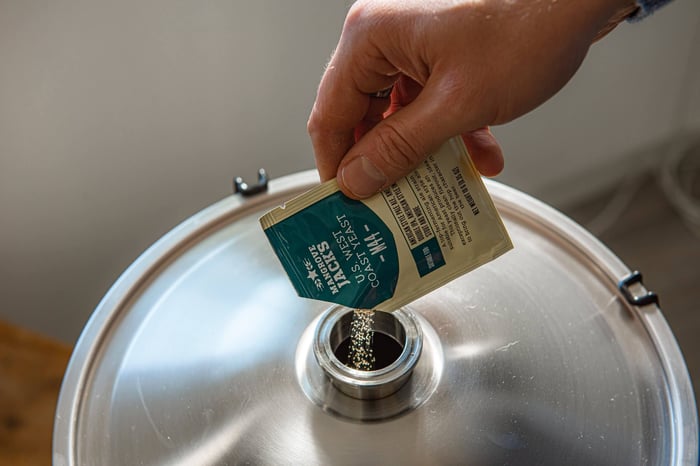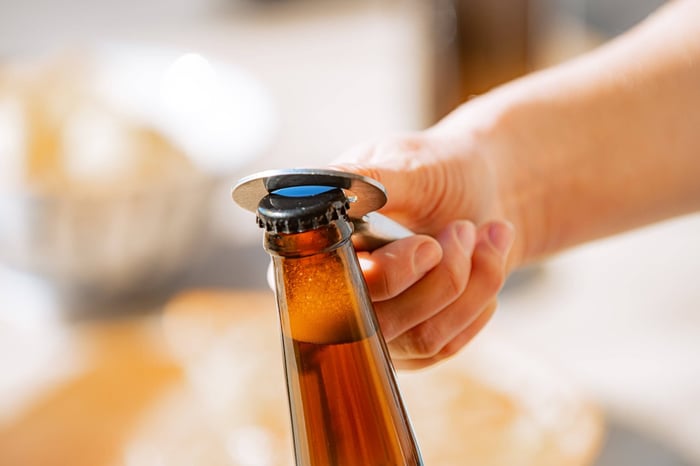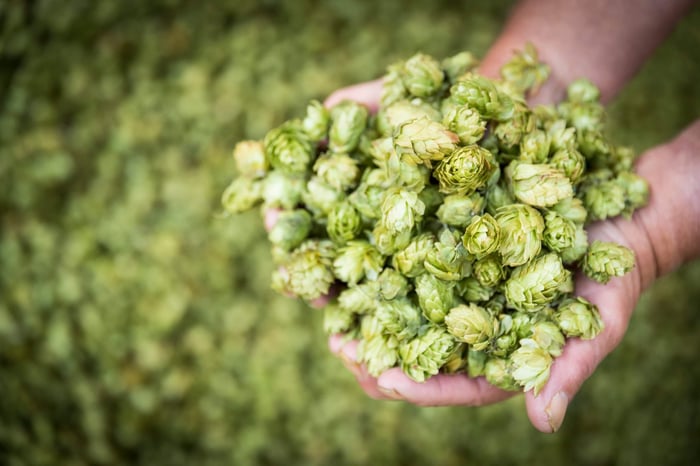Fermentation is where your brewing dreams become reality – that pivotal moment when simple wort transforms into the complex, flavourful beer that makes all those hours of preparation worthwhile. Whether you're brewing in Auckland's humidity or Canterbury's cool climate, understanding fermentation is your key to consistently brilliant beer.
The Fermentation Process Explained
Picture fermentation as nature's most efficient brewery worker. Your yeast consumes the sugars extracted from your grain, producing alcohol and carbon dioxide in return. This remarkable process begins the moment you pitch yeast into your cooled wort, setting off a chain reaction that'll have you checking your fermenter far too often!
Timing Questions: When Will My Beer Be Ready?
Here's something that might surprise new brewers – we don't actually control fermentation timing. Once you've pitched your yeast, they're running the show entirely. Our job is creating the perfect environment for them to work efficiently and produce clean flavours.
Think of it like tending a garden – you can provide ideal conditions, but you can't force the plants to grow faster than they naturally want to.
Temperature: Your Most Powerful Tool
In New Zealand's variable climate, temperature control can make or break your brew. From sweltering Auckland summers to chilly Southland winters, managing fermentation temperature is absolutely critical for consistent results.
The golden rule for New Zealand conditions: Target the lower-middle section of your yeast's temperature range. If the packet suggests 18-22°C, aim for 19-20°C. This approach works particularly well in our climate and helps prevent temperature spikes during warmer periods.
Climate-Specific Considerations
Summer brewing challenges:
- Use temperature controllers or fermentation fridges
- Consider cooler locations like garages or basements
- Monitor daily temperature fluctuations
- Plan brewing for cooler parts of the day
Winter brewing advantages:
- More stable temperatures
- Less need for cooling equipment
- Perfect conditions for lager styles
- Natural cold conditioning opportunities
Temperature Impact on Your Beer
Excessive heat creates several problems:
- Unwanted fruity esters
- Harsh, hot alcohol flavours
- Accelerated fermentation leading to poor flavour development
- Higher risk of stuck fermentation
Too much cold brings different challenges:
- Sluggish yeast activity
- Incomplete fermentation
- Extended brewing timelines
- Poor yeast health
Local advantage: Kveik yeast strains work brilliantly in New Zealand's warmer regions. These robust Norwegian farmhouse yeasts thrive at temperatures over 30°C without producing off-flavours – perfect for those hot Northland summers when traditional yeasts struggle.
Measuring Fermentation Progress Accurately
Forget about using your airlock as a progress meter! Sure, those bubbles are mesmerising (we've all lost time watching them), but they're not reliable indicators. CO2 can escape through microscopic gaps, making your airlock go silent while fermentation continues happily.
Reliable measurement techniques:
- Hydrometer for specific gravity readings
- Refractometer with alcohol correction calculations
- Digital hydrometers for continuous monitoring
- Take readings over 2-3 consecutive days for accuracy
Post-Fermentation Management
Once primary fermentation concludes, resist the urge to rush into packaging. This rest period is crucial for beer quality:
Benefits of proper conditioning:
- Yeast settles naturally, improving clarity
- Flavours mature and integrate properly
- Harsh fermentation notes smooth out
- Beer stability improves significantly
New Zealand tip: Take advantage of our natural temperature variations. If possible, gradually reduce temperature during conditioning – it encourages yeast flocculation and produces clearer, more stable beer.
Rethinking Secondary Fermentation
Traditional brewing advice often recommended transferring beer to secondary fermenters after primary fermentation. Modern understanding suggests this practice frequently does more harm than good:
Risks of unnecessary racking:
- Oxidation from air exposure
- Contamination during transfer
- Flavour degradation
- Equipment cleaning complications
Better approach: Only use secondary fermentation when actually required – such as [LINK: extended aging projects] or [LINK: fruit additions] that need additional time.
Understanding Fermentation Stages
Watching fermentation unfold teaches you valuable lessons about yeast behaviour. Here's what happens during each phase:
Lag Phase: Preparation Time (0-15 hours)
Your yeast cells are essentially waking up and assessing their new environment. They're absorbing essential nutrients like oxygen, minerals, and amino acids while preparing for the work ahead. Don't expect airlock activity yet – they're still getting organised.
Growth Phase: Action Time (4 hours – 4 days)
This is fermentation's most dramatic period! Yeast multiply rapidly, creating the characteristic krausen foam that every brewer loves to see. Vigorous CO2 production begins, your airlock goes crazy, and metabolic heat creates gentle circulation patterns in the wort. The majority of alcohol and flavour development occurs during this exciting phase.
Stationary Phase: Clean-Up Time (3-10 days)
Primary sugar consumption is complete, so yeast switch to processing more complex compounds. They begin absorbing potential off-flavours like diacetyl, higher alcohols, and certain esters, converting them into more pleasant compounds. The krausen evolves from creamy white to yellow-brown as proteins and hop materials incorporate.
Decline Phase: Rest Time (several weeks)
Yeast activity slows dramatically as available nutrients decrease. Cells begin settling out of suspension while your beer clarifies naturally. This quiet period is when flavours mature and achieve proper balance – patience during this stage pays enormous dividends.
Common Fermentation Questions
What should I do if fermentation seems stuck?Check your temperature first – cold conditions often cause apparent stalling. Gently swirl the fermenter to rouse the yeast, or consider raising temperature slightly within the yeast's range.
Is it normal for different batches to ferment at different rates?Absolutely! Factors like yeast health, wort composition, temperature stability, and seasonal variations all influence fermentation speed. Focus on final gravity readings rather than timeline expectations.
How do I know if something's gone wrong?Trust your senses but don't panic at unusual smells – fermentation produces many interesting aromas that dissipate with time. Concern yourself with persistent off-odours, unusual colours, or pellicle formation on the surface.
Advanced Fermentation Strategies
Once you've mastered basic fermentation, consider exploring advanced techniques suited to New Zealand brewing:
- Seasonal brewing: Align beer styles with natural temperature cycles
- Wild fermentation: Experiment with indigenous yeasts (carefully!)
- Mixed fermentation: Combine different yeast strains for complexity
- Temperature ramping: Controlled temperature increases for specific flavour development
Resources for Continued Learning
Fermentation mastery develops through experience and observation. Keep detailed brewing logs noting temperatures, timeline, and outcomes. Each batch teaches valuable lessons about yeast behaviour under different conditions.
Ready to perfect your packaging techniques? Explore our comprehensive guides on [LINK: bottling procedures] and [LINK: kegging systems] to complete your brewing knowledge.
Questions about your current fermentation or planning your next brew? We're fellow brewers who understand the challenges of New Zealand's unique brewing environment. Contact us – we love discussing fermentation with passionate home brewers.
Grainfather Team










